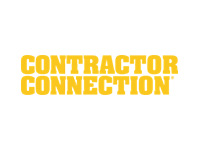As a homeowner, you’ve probably panicked over all the different ways your home can be damaged: accidents, break-ins, burst pipes. But unless you live in a frequently stormy area, you probably haven’t thought much about weather-related damage.
But you should.
Thunderstorms, hurricanes, heavy downpours, and winds can cause significant damage to a home, from busted windows to fire hazards caused by downed power lines.
If you already know your homeowner’s insurance policy’s provisions for weather-related fixes, you’re in good shape. If you don’t, get acquainted ASAP.
Before you even get to the insurance step, you need to know what to do after a storm. Here are the five steps you should take immediately.
Step 1: Secure the Area
Any time there is destruction in a home that involves water, you need to be on high alert. Storms not only pour buckets of rain down on houses but also overwhelm the sewers, causing even more water to pour into neighborhoods.
Add on top of that the risk that downed powerlines pose, and you’ve got yourself a vast minefield of potential dangers on your hands.
The first thing you need to do whenever severe weather compromises your house is to wait for things to blow over and secure the area. If there is standing water, understand the risks of electrocution. It’s best not to wade in because water conducts electricity.
Check that fuses, powerlines, and electrical circuits are either unaffected or switched off. Then proceed into the building. What you should look for now are things like broken glass from busted windows, dangerous objects like knives and nails that may have been shaken loose and fallen onto the floor, and damage to the floor itself.
Before you start moving around the place, documenting the damage, and testing furniture to see if it’s okay to keep, make sure there’s no way for you to be injured.
Step 2: Don’t Touch Anything Until You Take Photos
You’ve secured the area and know you’re safe. None of the doorframes are going to collapse in on you, and you won’t step on a shard of glass. There’s no electrical risk.
You’re okay, but your house isn’t. You need to document every single place that the storm affected your house.
These aren’t only the obvious things, like broken windows and visible water damage. When you contact your insurance, you should have an exhaustive list of everything damaged, whether part of the structure itself or objects like furniture and decoration.
To give you an idea of what to document, look for damage related to:
- Exteriors: the walls are cracked, damaged by water, or the siding has torn off.
- Windows and Doors: check for cracked glass or doors torn off their frames.
- Roof: gutters, shingles, or tiles displaced by the storm; include where and approximately how many.
- Heat and Electrical: a compromised gas line or an exploded transformer; take photos of the discoloration and warping.
- Outlets and Fixtures: check all the outlets and electrical fixtures; if water has corrupted them, make a note of it.
- Broken Appliances: from as small as a toaster to as big as washers and driers take photographs of damaged appliances, whether that means scratched or fully non-operational.
- Basement and Foundation: All that water is going to go somewhere. Check your basement and crawlspaces for flooding. Prolonged exposure to water can damage the foundation of a home, so document and try and act fast on removing that water.
Step 3: Contact Your Insurance
A good insurance policy can be a lifesaver. If the insurer can verify your claims of damage and disrepair, you may be entitled to significant financial compensation. That’s why you need to document fast and document fully.
It’s also important to be honest and accurate. If an insurance agent comes out to the home and finds the actual damage does not line up with your reports of the damage, the misreporting may void all or part of your claim.
Settling an insurance claim can be complicated, but often, the damage incurred by storms is so severe that you have no choice but to persist in your claims.
And don’t limit your claims to the physical damage done to the home. You might need to stay for a time at another home or hotel room. That can be part of the insurance coverage under temporary living expenses.
The important thing here is to keep the receipts for everything. If you have water vacuumed out of your home, keep the receipt. If you have to pay for an Uber to the hotel, keep the receipt. You get the idea.
They’ll only know what to compensate you for if you keep valid proof.
Step 4: Determine How Much You’re Willing and Can Fix
Very rarely does an insurance policy, even an excellent one, cover every expense involved in fixing up a home damaged in a storm. When water gets involved, it simply affects so many things—from floor to ceiling—that you will likely have to pay out of pocket for some things.
Valuables like laptops and jewelry can often qualify for financial compensation. But if sentimental objects, like keepsakes and heirlooms, are damaged or swept away in the storm, you’re on your own. The “value” of those things doesn’t come in dollars, so you can’t expect your insurance company to help out.
But when it comes to fixable items like furniture, windows, and floors, wait for a quote from your insurance company. Evaluate that against quotes you’re getting from contractors and repairers. Often insurance companies will base the payment off those quotes themselves, so it’ll be a calculation you do in real-time.
Remember, as you’re getting quotes to work with in-network contractors to save yourself the costs of going with a maintenance specialist not approved by the insurer.
Step 5: Get in Touch with a Contractor
Some contractors only handle water damage; some only handle structural repairs, and so on. Then there are contractors like IDC Fire and Water Restoration. We make it easy by providing all the services homeowners need to get their homes out of the muck of storm damage.
But what’s important is finding someone you trust. If your house is damaged, you’re going to be in a repair phase for a long time. That means constant calls, quotes and re-evaluations, negotiations, and sum totals rising and rising.
Comprehensive repairs are stressful enough. You don’t need to add the stress that comes from not trusting the contractor who’s spearheading all the repairs.
Start by finding someone you can build a relationship with based on mutual trust and respect. From there, things should go smoothly.
Safe, Reliable Storm Damage Repair
You can count on top-quality, dependable storm repair from IDC Fire Water and Restoration. IDC provides not only water damage and wind damage repair services but also mold remediation services.
Whenever water plays a part in home damage, mold becomes a top concern. Mold can germinate and begin spreading within 72 hours of exposure to water. IDC can blast away mold as well as treat all signs of smoke and fire damage.
Next time a storm’s got you down, let IDC pick you back up.













